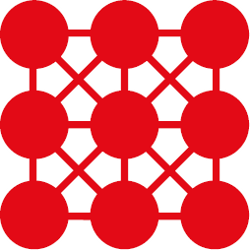- Genitourinary syndrome of menopause includes vaginal dryness, painful sex and painful urination
- This affects most postmenopausal women
- It’s best to try over-the-counter products first as prescription medicines can be costly
Hot flashes and night sweats are well-known side effects of menopause, but the end of a woman’s periods can also lead to other uncomfortable changes.
Vaginal dryness, painful sex and painful urination are common symptoms of genitourinary syndrome of menopause, or GSM. Estimates vary, but most research suggests that a majority of postmenopausal women are affected. It can significantly impair health, sexual function and quality of life.
But women experiencing these symptoms may not know why they’re happening or that treatments are available. In recent years, new therapies have been approved, and the North American Menopause Society (NAMS) has now published new treatment recommendations after reviewing those therapies.
Best to ‘start simple’
Deciding which to use starts by “knowing what you’re treating,” said Dr Anne Ford, an obstetrician-gynaecologist at Duke University Medical Center in Durham, North Carolina.
When counselling her patients, Ford recommends “starting simple, and then getting more complex”, which dovetails with the NAMS guidelines.
NAMS recommends over-the-counter products like moisturisers and lubricants first. If these options don’t help, prescription therapies can deliver oestrogen or other hormones directly to the vagina in the form of creams, rings, tablets and inserts.
Oral oestrogen therapy can be considered if vaginal symptoms are accompanied by debilitating side effects, such as hot flashes and insomnia. Still, the potential health risks associated with hormone therapy make it a backup option, NAMS says.
GSM used to be called vulvovaginal atrophy, to describe when tissues outside and inside the vagina become thinner, drier and less flexible due to less oestrogen. The new moniker GSM “acknowledges that the symptoms were more than just vaginal and that they really included urinary symptoms”, said Dr Stephanie Faubion, medical director for NAMS.
Pain during sex
Adding the word menopause served to help women who didn’t recognise that these symptoms were related, she added.
While pain during sex is a common complaint, Faubion said the idea that the condition only affects sex is a misconception.
“We’re talking about this not just in the context of sex, but in the context of women being comfortable,” Faubion said. For example, wiping with toilet paper or wearing jeans can bring pain.
Ford explained that when NAMS recommends starting with “simple” treatments, it is referring to over-the-counter moisturisers and lubricants. If the discomfort is mostly external, moisturisers can be applied to the vulva. “Moisturisers aren’t really made for sex. They’re made for if people have discomfort in their day-to-day life due to the dryness,” she noted.
Prescription treatments expensive
For women who are experiencing pain during sex, over-the-counter lubricants can provide relief, Ford added.
Prescription treatments can be costly and may not be covered by insurance, which is why women are urged to try over-the-counter remedies first.
But sometimes these products don’t do enough. The symptoms of dryness and pain are side effects of the vaginal tissues thinning and losing elasticity, and only hormonal therapies can treat the problem itself.
“If we get to the point where I think a prescription-based product is indicated, then I talk to the patient about their preferences and go over all the different kinds of products that are available,” Ford said. “There are creams, rings, vaginal inserts and suppositories, and there’s now a tablet – the ospemifene tablet.”
Oestrogen delivered vaginally provides sufficient hormone to relieve symptoms and is preferred over more aggressive oestrogen treatment when the symptoms are centralised in the vaginal area, according to the NAMS recommendations.
Vaginal oestrogen products are typically low-dose. Some, such as the DHEA vaginal insert, are not specifically oestrogen-based, but work by increasing certain hormone levels.
Systemic hormone therapy
“If the patient really has pain on the inside of the vagina, then anything that you put in the vagina will help that – whether it’s the ring, the cream or the inserts – all of that stuff will probably help the internal discomfort,” Ford said.
The oral drug, ospemifene (Osphena, Senshio), is approved to treat vaginal dryness and painful sex. Due to potential health risks, including endometrial cancer, all other systemic oestrogen therapies are only recommended if additional menopause-related symptoms are present.
“If I had somebody who came in and said that they weren’t sleeping because they were having 20 hot flashes at night, they were irritable, their depression was getting worse, and it was so horrible that they just couldn’t live like this – and they had vaginal pain – that’s somebody who would try systemic hormone therapy,” Ford said.
Energy-based devices, including lasers, may one day be added to the treatment arsenal. Lasers are thought to work by inducing collagen production, thereby thickening the skin.
But, Faubion said, “While initial results are really promising, we still await the longer-term studies to make sure that these are safe and effective for women over the long haul.”
The new NAMS position statement was published online in the September issue of Menopause: The Journal of The North American Menopause Society.
Image credit: iStock












